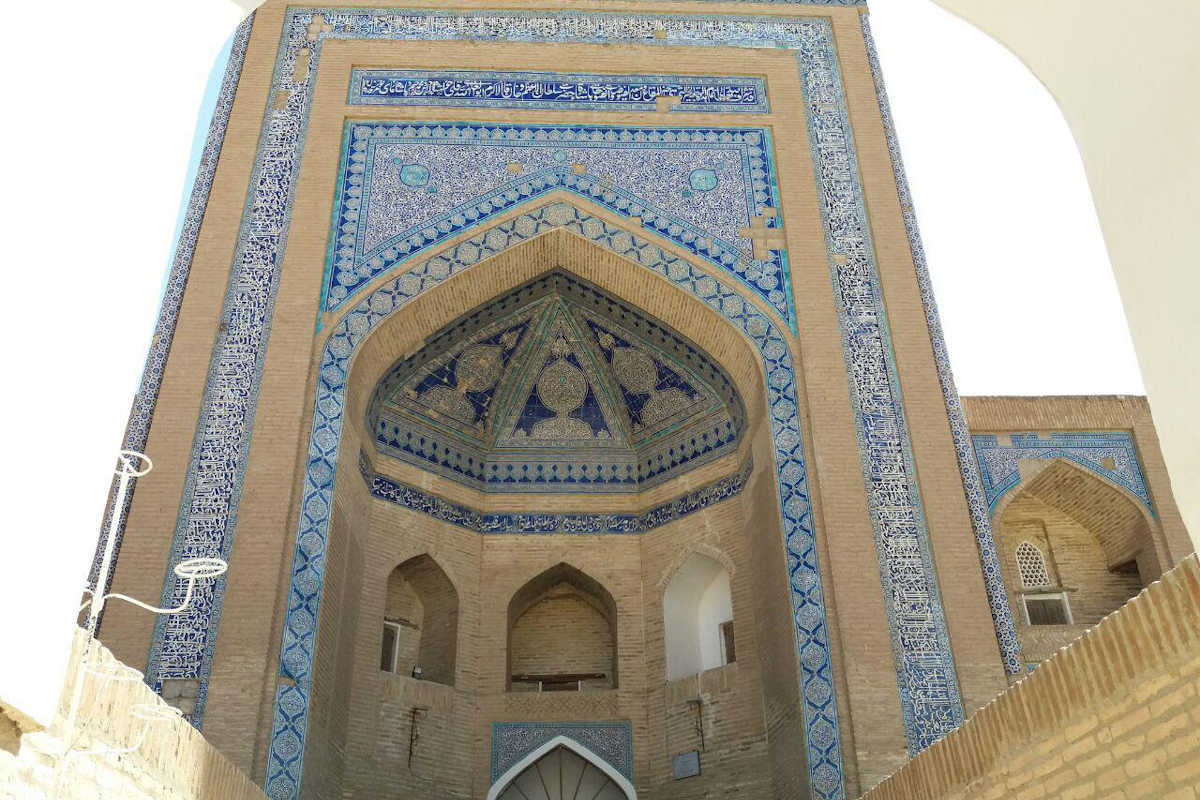Khiva - Abdullakhan Madrasa

The Abdullakhan Madrasah in Khiva: a monument of remembrance and a centre of natural history
The Abdullakhan Madrasah in Khiva, which is located south of the Kutlug Murad Inak Madrasah, was built in 1855 by the mother of the Khiva Khan in memory of her deceased son Abdullakhan. His tragic death prompted her to erect this building in order to preserve his name for posterity. The madrasah is an important example of the architecture of the late Khiva Khans and is characterised by a simple but functional design.
Architectural features of the madrasah
The architectural design of the madrasah follows a minimalist style without elaborate ornamentation. The entrance portal, which is usually a central design element of Islamic educational institutions, remains simple and unadorned in this case, which emphasises the calm dignity of the building. The madrasa is embedded in a rectangular courtyard surrounded by hujras, small cells for students and scholars. These are built using the traditional Balkhi technique, which is characteristic of the Khorezm region.
A special architectural detail is the domed hall in the southern part of the building, which served as a mosque. It is slightly offset from the transverse axis of the vestibule, which is a rarity in the architecture of the region. There is no domed hall in the north-east corner of the madrasa, instead there are three more hujras. In the centre of the inner courtyard is a well that was once used to supply water to the residents.
The historical significance of Abdullakhan
The historical significance of Abdullakhan is recorded in various sources, in particular in the brochure by Kamiljan Hudaibergenov entitled ‘Family Tree of the Khiva Khans’ (‘Khiva khonlari shazharasi’). It says: ‘Abdullakhan was a man who trusted everyone’s words. By slandering Mir Ahmad, the Khan’s commander, he caused the innocent blood of several people to be shed. He was a very ruthless and impatient man, but he valued friendship, loved justice and was brave and courageous. After his death, there were no male descendants, only a daughter who was married to Abdulaziz Tura.’ In order to preserve the memory of her son, his mother decided to build the madrasah as a place of knowledge and education.
The Abdullakhan madrasah as a natural history museum
Today, the madrasa is no longer used for educational purposes, but serves as an exhibition centre for the Khorezm Museum of Natural History. The aim of this museum is to familiarise visitors with the unique natural features of the region.
The exhibition includes various sections dealing with the flora and fauna of the Khorezm Oasis, the geological relief of the region, the climate and environmental protection measures. Special emphasis is placed on the Sultan Wais Mountains, the extensive delta of the Amu Darya River and the fauna of the Karakum and Kyzylkum deserts. Useful plant species that are important for agriculture and medicine are also presented.
The museum’s natural history department was first established in 1960. The exhibition was last comprehensively redesigned in 2008 and, with an exhibition area of 180 square metres, the museum offers a scientifically sound presentation of Khorezm’s natural features. The exhibition not only shows the geographical and biological features of the region, but also highlights the effects of human intervention on the ecosystem and presents strategies for the sustainable use of natural resources.
The Abdullakhan Medrese is not only an important historical monument, but also fulfils a new function today as a centre for natural history and environmental education. It connects the past with the present and preserves the region’s heritage both culturally and ecologically. As a place once used for education and religious instruction, it now provides a deeper understanding of nature and the challenges of environmental protection in the unique landscape of Khorezm.
